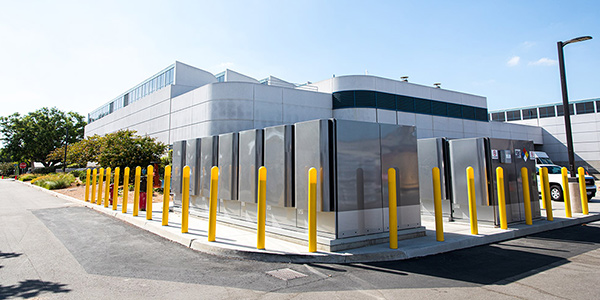The diversity and complexity of state climate policies make it unclear which approaches are driving the most progress on emissions reductions, jobs growth and energy resilience, a report by the Clean Resilient States Initiative said.
The report, “Clean Resilient States: The Role of U.S. States in Addressing Climate Action,” is the first in a series, part of a Center for Strategic and International Studies (CSIS) initiative to understand whether state climate policies are achieving their objectives.
To build an understanding of climate policy progress, the report analyzes how metrics for progress shape the perception of states’ performance. Context, the report said, is key to identifying the scenarios that advance emissions, jobs and resilience goals.
Emissions Reductions
An assessment of emissions patterns by individual states will help legislators and regulators identify which new policies can improve emissions reductions over time, according to the report.
Many states are reducing emissions through broad energy efficiency measures and renewables development. The report said a state’s emissions-reduction progress is best measured by the volume of emissions per unit of gross domestic product, or emissions intensity.
That metric reflects differences in states’ energy consumption and “is a good proxy for the relative cost and complexity of the pathway a state must take to reduce its emissions,” the report said.
A state with a lower emissions intensity, for example, might lean toward a service-based economy with low energy consumption. Conversely, a state with a higher emissions intensity might rely heavily on industries that use more energy to power large equipment.
An economy that depends on energy-heavy industry might need policy measures that go beyond energy efficiency and renewables development, including, the report said, “radical product innovations” to replace fossil fuels.
All states, however, are going to find it harder to reduce emissions over time, and new policies will need to address that challenge, according to the report.
Job Creation
The unique characteristics of a state define how and where new jobs are created by its climate policies, the report said.
Most states have advanced climate policies based on environmental and job benefits, but it isn’t clear whether climate policies always spur job growth, the report said.
Policies to transition to clean energy can be limited or cultivated by a state’s renewable resource characteristics, workforce education, infrastructure limitations and urban sprawl. The report said that two states may have similar energy policies, but one might need additional incentives, such as a workforce development initiative, to achieve similar levels of clean job growth.
An evaluation of policies designed to produce jobs within the context of workforce, infrastructure and resource characteristics will help state leaders understand green economic growth. It will also highlight when the promise of jobs “falls short” and why, the report said.
Resilience
The difference in states’ experiences with natural disasters “creates some ‘conceptual fuzziness’ about what resilience looks like in practice,” the report said.
States have begun to foster energy resilience through planning and energy system design based on assessments of their overall vulnerabilities to devastating climate-related events. Those assessments are driven by the memory of the most recent natural disasters, the report said.
The report cited the case of New York and New Jersey, which suffered widespread outages from Hurricane Sandy in 2012. The experience prompted both states to support development of “cleaner, more resilient energy systems” during recovery efforts, the report noted.
Disasters give momentum to options for hardening systems, such as using smart meters and demand response; deploying renewable resources with energy storage; or fostering islanding capabilities through microgrid development, which has occurred in California in the face of persistent wildfires.
But the vast differences in states’ experiences with such disasters, along with their proportional responses, make it hard to assess whether resilience policy approaches are adequate or cost-effective, the report said.
The individual histories driving resilience initiatives may explain why there are few data on how states are pursuing energy resilience, according to the report.
Additional uncertainties may come from the broad deployment of renewables within state resilience strategies. Anticipating those uncertainties, the report said, will be “increasingly important as state energy transitions advance.”
Coordination is Key
The report contends that emissions reductions, clean energy growth and resilience are “distinct but interrelated imperatives” and “state success in each of these areas is partly contingent on efforts to strategize around and coordinate across all three.” It points to the increasing practice of states of including environmental justice considerations into energy policy with an eye to deploying clean resources and creating opportunities in communities that have been disproportionately affected by pollution and climate change.
“Since this emerging priority takes on dimensions of emissions reductions, clean growth and resilience, it cannot be fully accounted for without a wider view of how states are coordinating across policy areas,” the report said.
The report also highlights the benefits — and challenges — of states coordinating their activities and policies across borders.
“Willingness to coordinate is often conditional on some degree of priority alignment across states,” the report said. “Conversely, where states lack shared priorities, there is potential for conflict to arise, particularly among states that trade energy or rely on common energy infrastructure.”
Such conflicts can slow or reverse state initiatives, the report noted.
CSIS sees the same potential for coordination and conflict between state and federal policies. While states have benefited from federal research and development efforts around energy technologies and resilience, the federal government has also in recent years attempted to roll back state regulations regarding power plant and vehicle emissions.
But the new administration will likely yield a lessening of those conflicts.
“Apart from a new national agenda, President Biden may support considerable progress in state-level climate initiatives simply by scaling back such challenges to them,” the report said.




